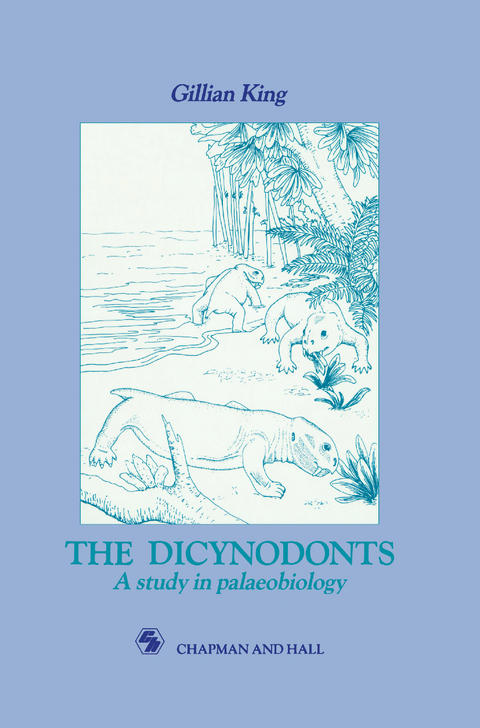
Dicynodonts
Chapman and Hall (Verlag)
978-0-412-33080-3 (ISBN)
The dicynodonts, an important group of permo-triassic reptiles, were the first really successful herbivorous tetrapods. Moreover they provided the bulk of the prey species for the ecosystem in which the mammals evolved, which makes them interesting in a wider context. The dicynodonts left an abundant fossil record, mainly in what is now southern and eastern Africa. This abundance enables investigation of their community structure and permits observations to be made on the changes in diversity that the group underwent throughout history. Such palaeoecological studies are becoming increasingly important since they have direct bearing on the evolution of other fossil groups. Their detailed preservation allows functional considerations to be derived from structure, providing evidence for discussion of reproduction, thermoregulation and social behaviour - all important aspects of the study of the evolution of mammals. These studies are summarized by a recognized expert in the field and should be valuable to those interested in evolution, palaeoecology and palaeobiology, as well as geologists and zoologists.
This book should be of interest to evolutionary biologists, palaeoecologists, palaeobiologists, geologists and zoologists.
Introducing dicynodonts; dicynodont organization - the head, the body; origins and early forms - Venjukovioid functional anatomy, the dromasaurs; typical dicynodonts: tapinocephalus zone dicynodonts - eodicynodon, diictodon, robertia, emydrops, pristerodon, cheldontops, other tapinocephalus zone forms; the environment of the tapinocephalus zone; dicynodont diversity: dicynodonts of the cistecephalus zone; the four main genera; some digging forms; the aulacephalodontinae - broad-headed forms; endothiodon; rhachiocephalus; myosauroides; other cistecephalus zone forms; conditions in cistecephalus zone times - South Africa; Dicynodont decline: dicynodonts of the daptocephalus zone; conditions in daptocephalus zone times; the lystrosaurus zone; dicynodonts of the lystrosaurus zone; lystrosaurus, myosaurus, conditions in lystrosaurus zone times; dicynodont mid-life crisis; the last dicynodonts - post-lystrosaurus zone dicynodonts; late Spathian (early Triassic), early Anisian (middle Triassic), middle Anisian (middle Triassic), late Ladinian (middle Traissic), early Norian (late Triassic) dicynodonts, conditions during the middle and late Triassic. An overall view: the daily life of a dicynodont; long-term developments of dicynodonts; diversity changes through time, diversity changes in space.
...a clear, well organised synoptic review with the minimum of unnecessary information...I only wish most fossil groups were so well reviewed. New Scientist; The book is a lesson to us all an shows that when faced with the inestimable caprice of geological time, it pays to adopt a sense of proportion. Nature
| Zusatzinfo | XII, 234 p. |
|---|---|
| Verlagsort | London |
| Sprache | englisch |
| Maße | 156 x 234 mm |
| Themenwelt | Naturwissenschaften ► Biologie ► Evolution |
| Naturwissenschaften ► Geowissenschaften ► Mineralogie / Paläontologie | |
| ISBN-10 | 0-412-33080-6 / 0412330806 |
| ISBN-13 | 978-0-412-33080-3 / 9780412330803 |
| Zustand | Neuware |
| Haben Sie eine Frage zum Produkt? |
aus dem Bereich


